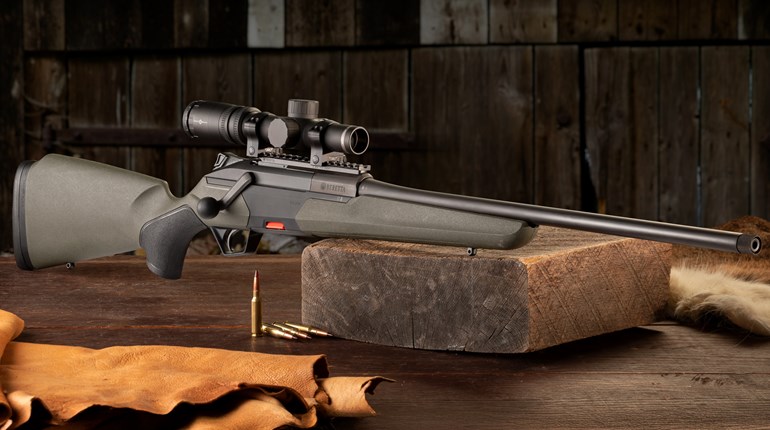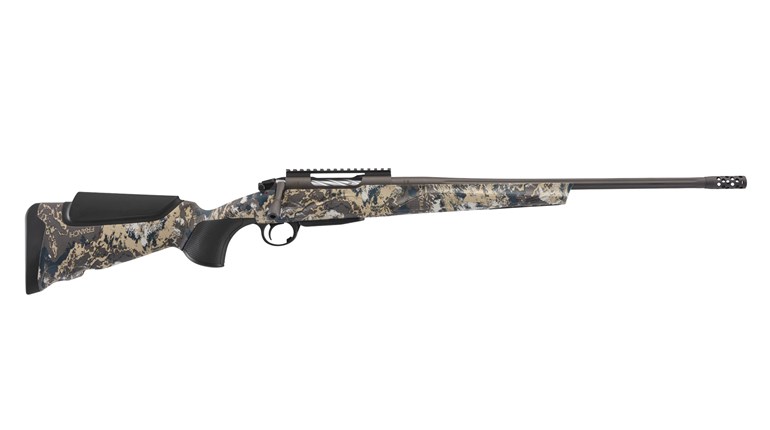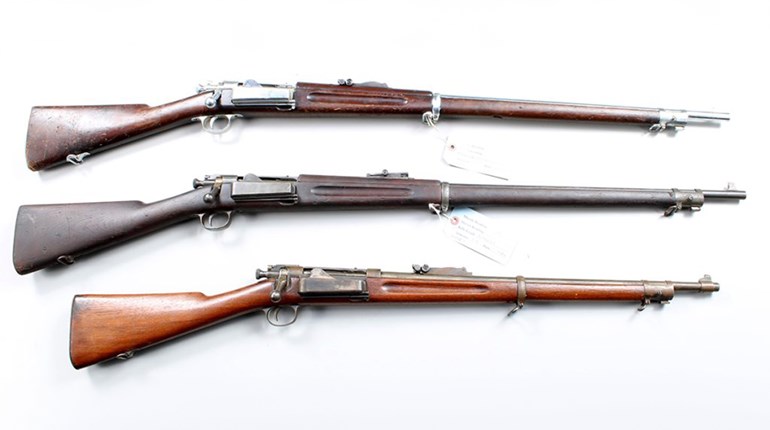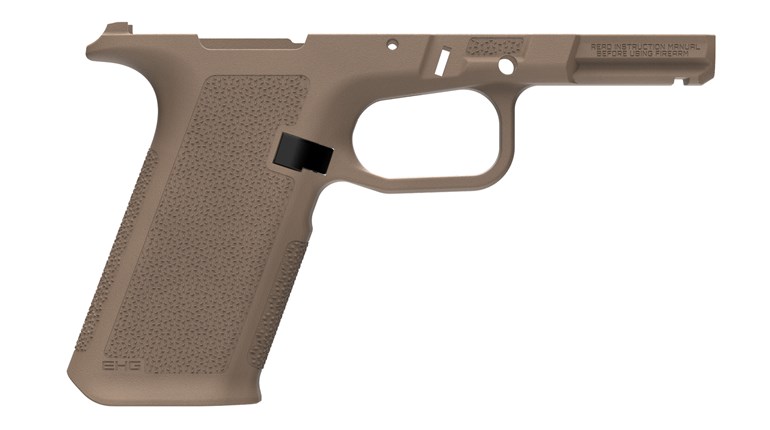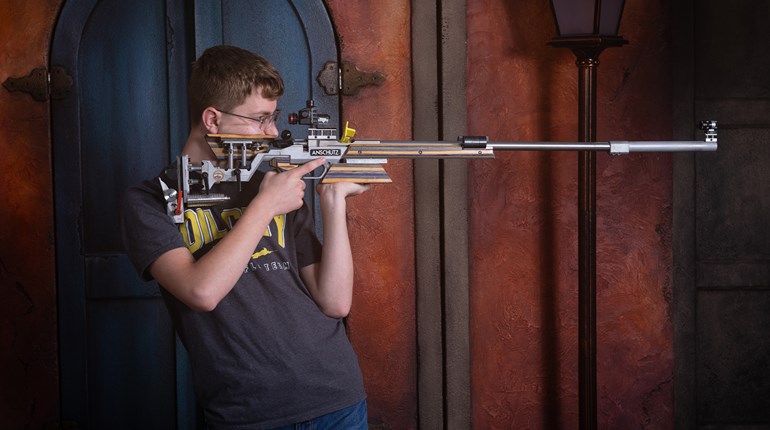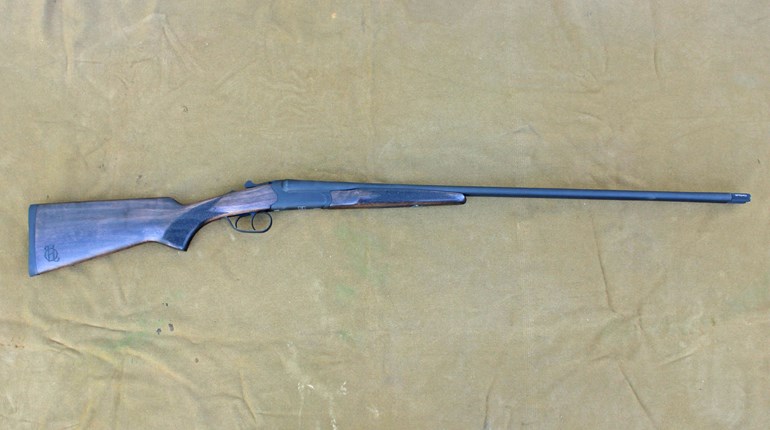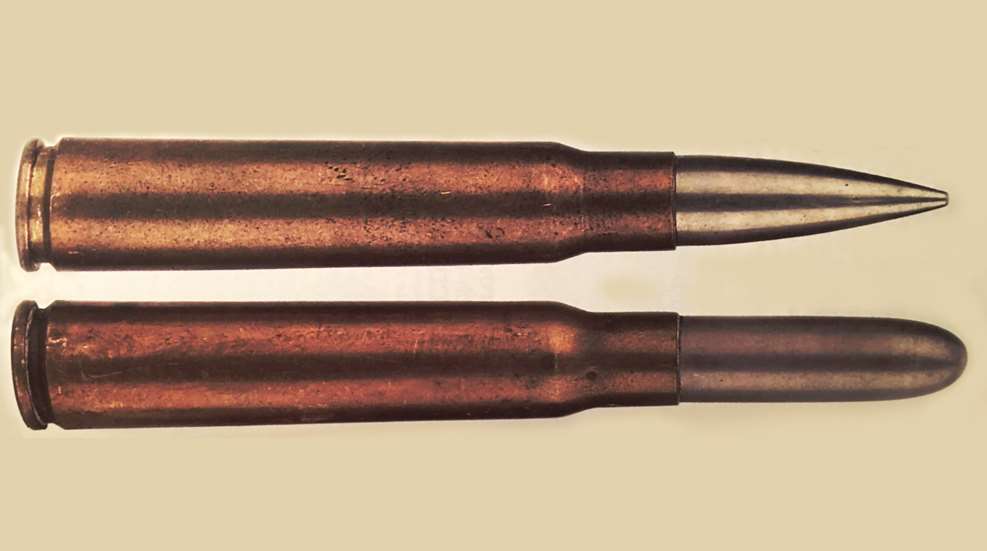
Above: S Patrone ammunition with a .323″ diameter pointed bullet (top) should never be fired in German M88 Commission rifles. The J Patrone (bottom) with its .318″ diameter round nose bullet should be fired only in the M88 Commission rifle.
The great variety of surplus military bolt-action rifles in 8x57 mm Mauser caliber are easy to find in the U.S. market. The reasonable prices of rifles in this caliber have encouraged importation of surplus military 8x57 mm Mauser ammunition in quantity. Such rifles and ammunition offer an attractive package for practice, training and informal target shooting. However, there is a potential safety issue in shooting such rifles that European shooters understand clearly, but American shooters have had little experience with. At the core of this issue is bore diameter of 8x57 mm rifles. There are two bore diameters—.318″ and .323″—in 8x57 mm Mauser caliber rifles you may encounter. In general, the safety issue lies in the fact that it is not safe to fire the 8x57 mm Mauser ammunition with .323″ diameter bullets in rifles having .318″ diameter bores. And, firing ammunition with .318″ diameter bullets in .323″ diameter bores results in very poor accuracy. Here is the history of the problem.
8x57 mm Mauser J Patrone
In 1888, the German Army adopted a new bolt-action, military rifle designated the “Gewehr 88” or German Infantry Model 1888. Because it was designed by the German Infantry Board (or Commission) at Spandau Arsenal, this rifle became popularly known as the Commission rifle. The rifle was chambered for a new 8x57 mm Mauser rimless, smokeless powder cartridge with a 226-grain FMJ-RN bullet of .318″ diameter with a muzzle velocity of 2095 fps. Average breech pressure was held to approximately 40,000 PSI. The cartridge was designated the 8x57 mm J Patrone.
8x57 mm Mauser S Patrone
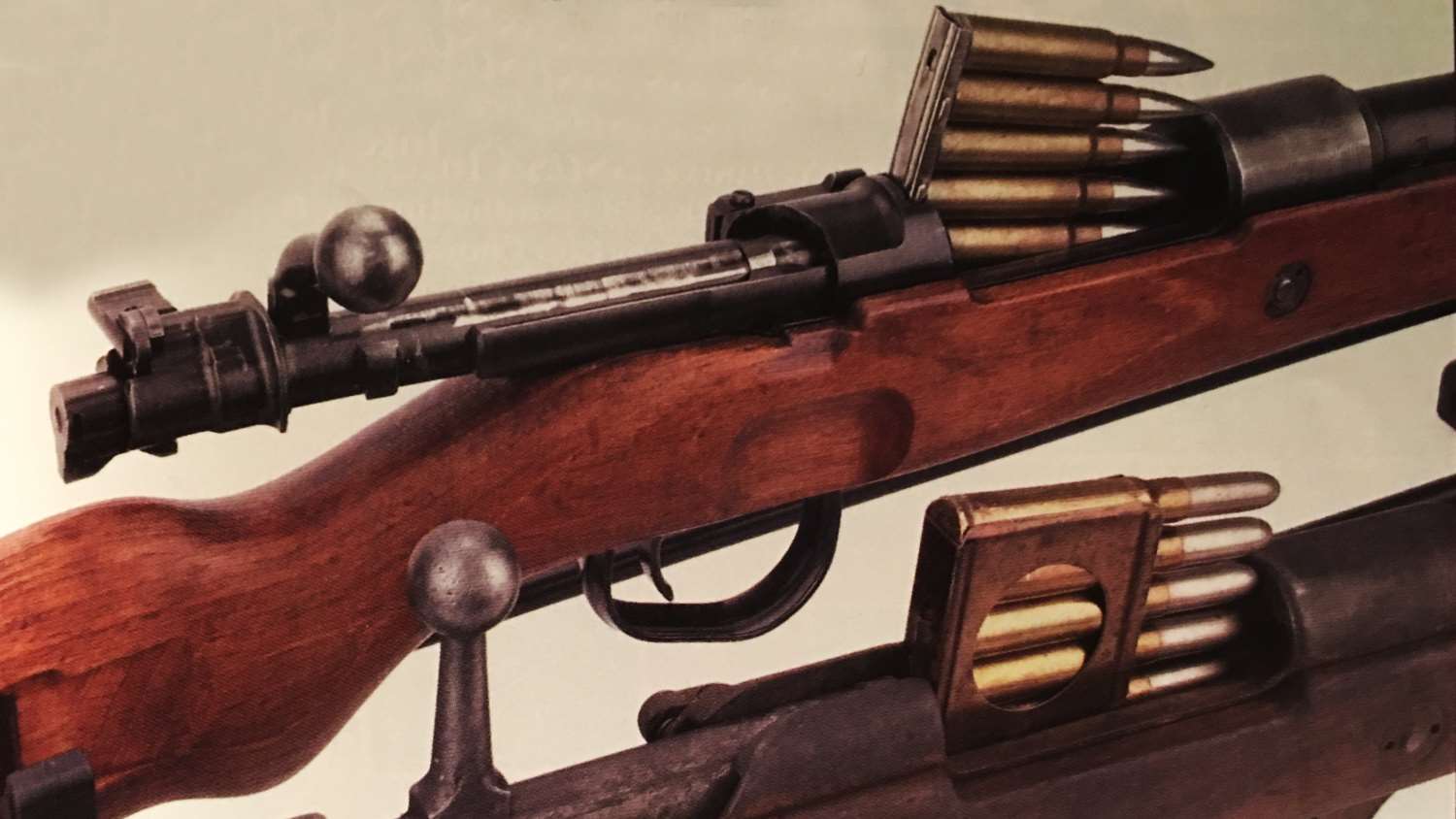
In 1898, the Commission rifle was replaced in German military service by the seminal Mauser M98 rifle (Gewehr 98). In 1905, the German Army adopted an improved military rifle cartridge that retained the 8x57 mm Mauser cartridge case, but employed a spitzer, 154-grain bullet of .323″ diameter. Combined with average breech pressures of approximately 50,000 PSI muzzle velocity with the lighter bullet was increased to 2880 fps. The new cartridge was designated the 8x57 mm JS Patrone or S Patrone as it became popularly known. The German Army fought World War I with the 154-grain .323″ diameter S Patrone. They fought World War II with the same cartridge loaded with a heavier, 198-grain spitzer boattail bullet.
Emergency during World War I
Most original M98 rifles chambered for the J Patrone were rebarreled for the new S Patrone. After 1905, all M98 rifles were manufactured with S Patrone chambers and barrels. During World War I, severe shortages of M98 rifles made it necessary to issue the older, obsolete Commission rifles for some types of German military service. Some Commission rifles were issued “as is.” German soldiers were aware of the differences between the two cartridges and the necessity of using the J Patrone in the unmodified Commission rifles. However, as World War I continued and the supply of J Patrone ammunition dwindled and then ended, German soldiers sometimes fired S Patrone ammunition in unmodified Commission rifles.
Hybrids and Freeboring

Today, Commission rifles can be found on the used rifle market. Some have been rebarreled for S Patrone .323″ diameter bore ammunition and are prominently marked with an “S” on the barrel or receiver. Most remain unmodified. A hybrid will also be encountered having an original J Patrone .318″ diameter bore barrel with a lengthy freebore reamed in the forcing cone in an effort to reduce breech pressures.
Original Commission rifles with unmodified .318″ diameter bores in good condition should be fired only with J Patrone (.318″ diameter bullet) ammunition. Never fire S Patrone (.323″ diameter bullet) ammunition in such rifles!
Hybrid Commission rifles with reamed out forcing cones should not be fired with any ammunition. S Patrone ammunition may create excess breech pressures despite the freebore and J Patrone ammunition accuracy will be very poor. These rifles are best retired as relics.
Commission rifles rebarreled for the S Patrone and so marked should not be fired with any ammunition. Remember, this was purely a desperate, wartime expedient and not considered entirely safe at the time. S Patrone ammunition is loaded to higher pressures than Commission rifles were originally designed and proofed for. These rifles also should be left as non-shooting relics.
Surplus 8x57 mm S Patrone
Most surplus 8x57 mm JS Mauser Ball ammunition on the market today is the .323″ diameter bullet S bore, usually with a heavy, 198-grain, spitzer, bottail bullet. New 8x57 mm JS Mauser hunting ammunition from major manufacturers is also .323″ diameter S bore, usually with a 170-grain, soft-point, flat-base bullet. Both types of ammunition should be used only in M98 rifles marked for such ammunition.













